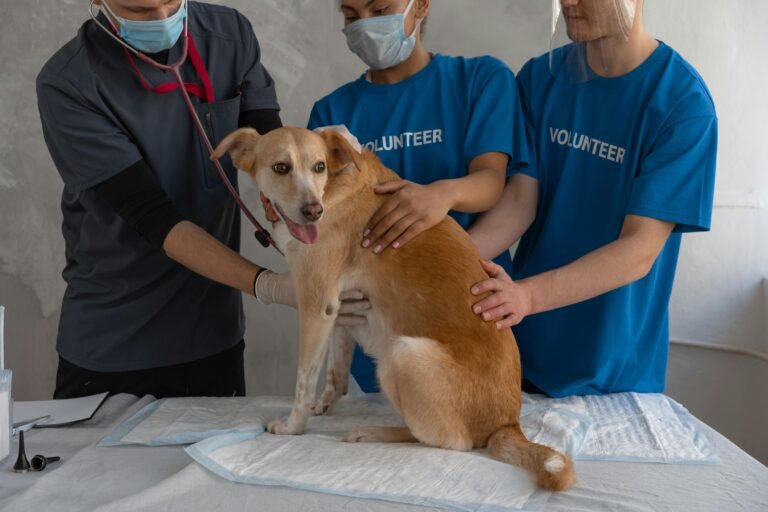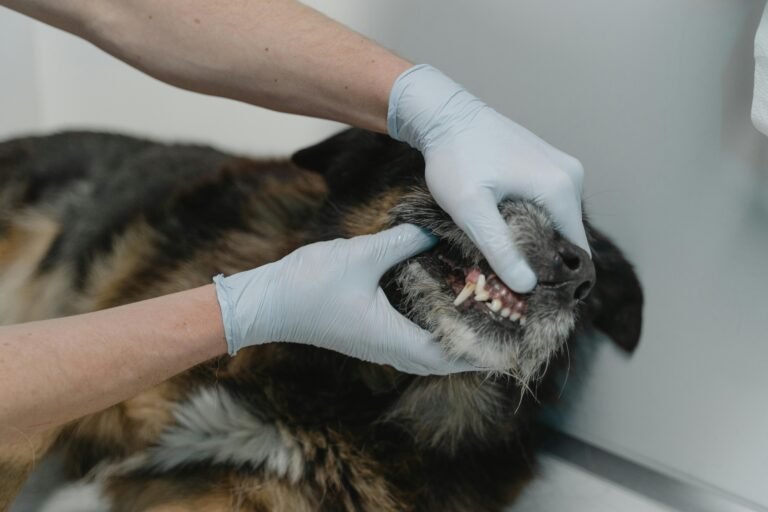Introduction
When most people think of joint problems in dogs, they picture an older dog limping or struggling to get up. But joint issues often start long before the first limp appears. Subtle changes in your dog’s movement, posture, or behavior can signal early discomfort. Catching these signs early can make all the difference—helping you slow progression, reduce pain, and preserve your dog’s mobility for years to come.
Why Early Detection Matters
Joint problems, such as arthritis, hip dysplasia, or ligament strain, develop gradually. By the time a limp becomes obvious, inflammation and cartilage damage may already be advanced. Early detection allows for treatment and lifestyle adjustments—like weight control, supplements, and low-impact exercise—that can greatly improve comfort and quality of life.
Common Causes of Joint Problems
- Age-related wear and tear: Older dogs naturally lose cartilage elasticity and joint lubrication.
- Genetics: Breeds like Labradors, German Shepherds, and Golden Retrievers are predisposed to hip and elbow dysplasia.
- Obesity: Extra weight increases pressure on joints, accelerating damage.
- Injury or overuse: Repetitive jumping or running on hard surfaces can strain ligaments.
- Poor diet or nutrient deficiency: Inadequate omega-3s and antioxidants can contribute to inflammation.
Subtle Early Signs to Watch For
Before limping appears, dogs often show quieter clues that their joints are hurting. Pay attention to these subtle signs:
1. Hesitation on Stairs or Furniture
If your dog suddenly pauses before jumping onto the couch or avoids climbing stairs, it may not be laziness—it could be discomfort. Joint pain often starts in the hips or shoulders, making elevation changes difficult.
2. Slower Morning Movement
Does your dog take longer to get up after resting or seem “stiff” in the mornings? This stiffness, which improves as they move around, is one of the earliest signs of arthritis.
3. Subtle Changes in Gait or Posture
Even slight unevenness in walking—like a shorter stride on one leg, a head bob, or swaying hips—can indicate pain. Watch your dog move from behind or in slow motion to spot irregularities.
4. Decreased Interest in Play or Walks
When dogs start associating movement with discomfort, they may avoid running, jumping, or playing fetch. A sudden drop in enthusiasm for favorite activities is often a red flag.
5. Licking or Chewing Specific Areas
Dogs often lick sore joints—especially their wrists, elbows, or hips. Persistent licking can even cause hair loss or irritation around the affected area.
6. Behavioral Changes
Pain can make even gentle dogs irritable or withdrawn. If your dog growls or snaps when touched in certain areas, or hides more often, joint discomfort could be the cause.
7. Shifting Weight or “Bunny Hopping”
When dogs experience hip pain, they may shift weight to their front legs or move both back legs together in a hopping motion to reduce stress on sore joints.
8. Muscle Loss in the Hind Legs
As dogs compensate for joint pain, they use certain muscles less. Over time, you might notice thinning or atrophy around the hips or thighs.
How Vets Diagnose Joint Issues
If you suspect early signs, schedule a veterinary exam. Your vet will likely perform:
- Physical palpation: Feeling joints for stiffness, warmth, or reduced range of motion.
- Gait analysis: Watching movement patterns to identify subtle asymmetry.
- X-rays or imaging: Revealing bone changes, joint space narrowing, or dysplasia.
- Blood tests: Ruling out infections or inflammatory conditions like Lyme disease.
Prevention and Early Support
Even before a diagnosis, there’s plenty you can do to support healthy joints and prevent worsening symptoms:
1. Maintain a Healthy Weight
Excess weight is the number one preventable cause of joint problems. Ask your vet for your dog’s ideal weight and adjust diet accordingly. Each extra pound adds stress on hips and knees.
2. Add Joint-Friendly Supplements
Supplements can help nourish cartilage and reduce inflammation. Look for products containing:
- Glucosamine and chondroitin
- Omega-3 fatty acids (fish oil)
- Green-lipped mussel extract
- Turmeric (curcumin)
Always check with your vet before adding new supplements, especially if your dog takes other medications.
3. Use Low-Impact Exercise
Controlled movement maintains joint flexibility and strength. Replace high-impact activities (like chasing balls on concrete) with gentler options:
- Swimming or hydrotherapy
- Leisurely leash walks on grass or dirt trails
- Slow hill climbs for muscle conditioning
4. Provide Supportive Surfaces
Hard floors can be tough on joints. Add rugs or yoga mats for traction. Orthopedic beds cushion pressure points and help joints recover during rest.
5. Regular Vet Checkups
Include joint assessments in your dog’s annual exam. Baseline X-rays or mobility evaluations can catch deterioration early—especially for predisposed breeds.
Home Observation Checklist
Keep an eye on these weekly indicators of joint health:
- Does your dog hesitate before lying down or standing up?
- Is their gait symmetrical and steady?
- Have they reduced jumping or running on their own?
- Do they seem stiff after naps or weather changes?
- Any consistent licking or chewing of limbs?
Tracking these trends helps you catch patterns that might not stand out day to day.
Treatment Options for Early Joint Problems
When diagnosed early, treatment often starts conservatively:
- Joint supplements and anti-inflammatory diets
- Laser therapy or acupuncture to reduce pain and boost circulation
- Physical therapy for mobility and muscle strengthening
- Prescription medications for pain management, if needed
The earlier these interventions begin, the better your dog’s long-term comfort and movement.
Conclusion
Joint issues don’t start with a limp—they start with subtle signs your dog hopes you’ll notice. By watching for hesitation, stiffness, or changes in play, you can catch discomfort early and take proactive steps. Combined with proper nutrition, weight management, and veterinary care, these small observations help ensure your dog enjoys an active, pain-free life well into their senior years.






